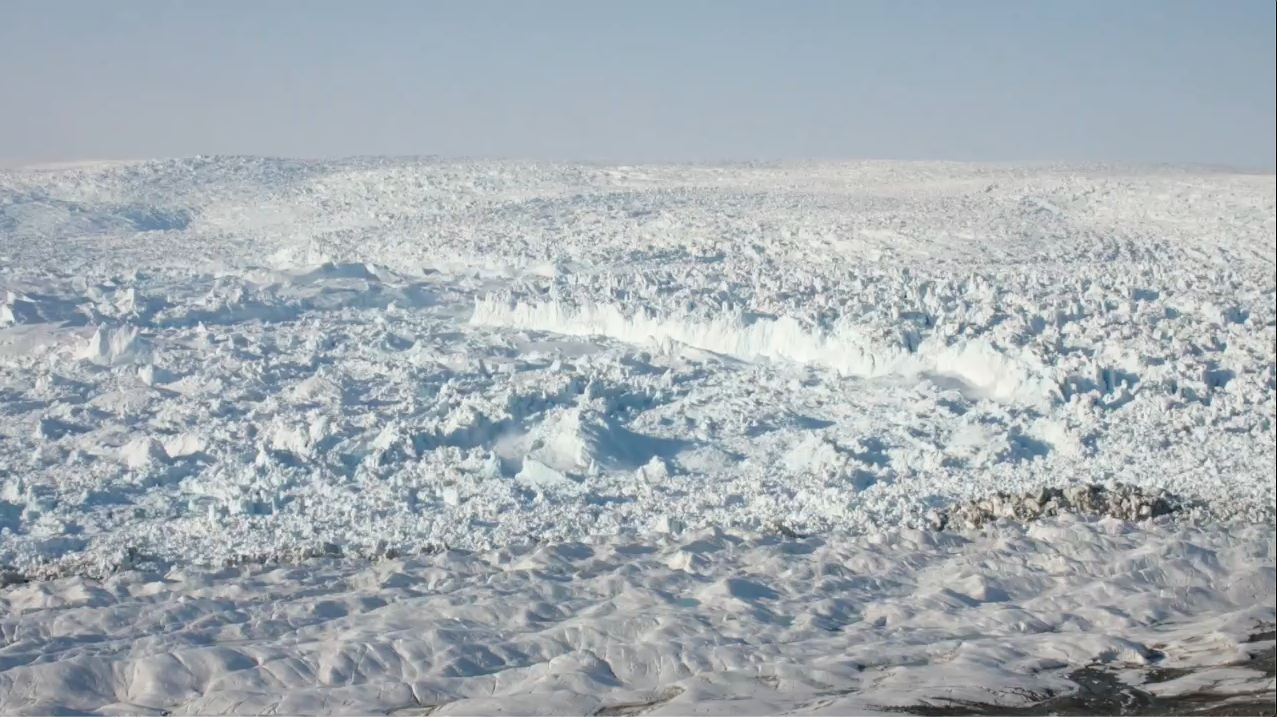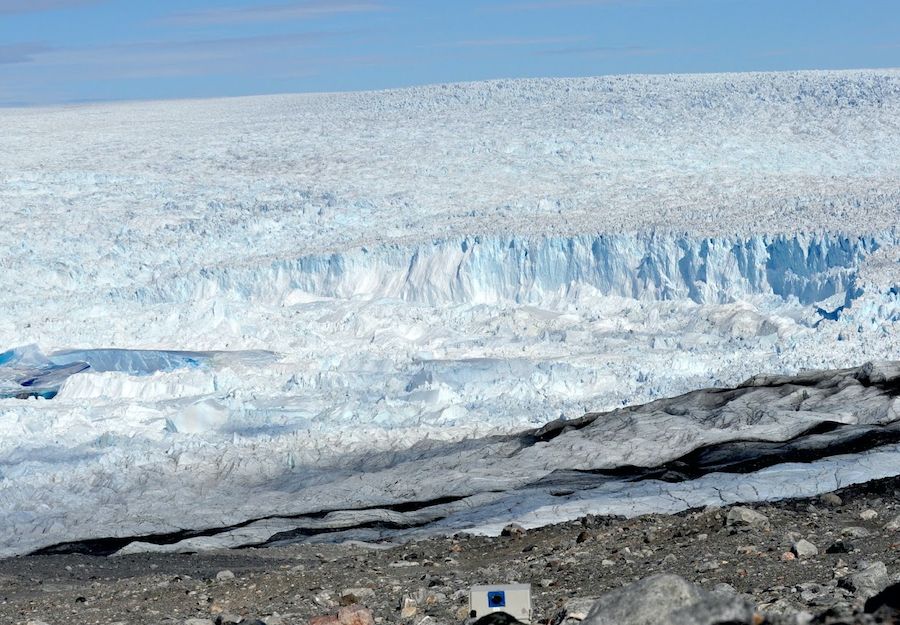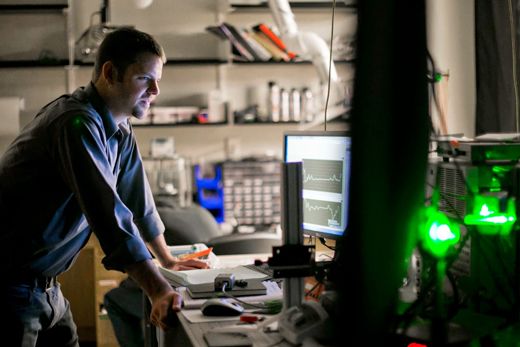Flow of slushy
sea ice predicts
calving of glaciers
Modeling the physics of climate change

Ice mélange, the mass of floating sea ice that buttresses many tidewater glaciers, plays a major role in the timing of calving icebergs, finds a new study published in Nature Geoscience. Scientists measured how just a tiny shift in the flow of a mélange, from smooth to slightly more chaotic, can predict up to one hour in advance that a massive hunk of ice will break off from a glacier, then crash into the ocean to form a new iceberg.
“As a gateway to the ocean, ice mélange is critical to predictions of sea-level rise,” says Justin Burton, associate professor of physics at Emory University and co-author of the paper. “We’ve provided what may be the best, most high-resolution data ever on the dynamics of a mélange leading up to a major calving event. That helps us understand the forces determining how much ice melts into the ocean, and how fast it happens.”
Ryan Cassotto, a glaciologist from the University of Colorado, Boulder, is lead author of the paper. Co-authors include Jason Amundson from the University of Alaska Southeast, Juneau; and Mark Fahnestock and Martin Truffer, both from the University of Alaska Fairbanks.
The study’s data was drawn from Ilulissat, a World Heritage Site and the most productive tidewater glacier in Greenland, also known as Jakobshavn Glacier. Kilometer-sized icebergs that calve from Ilulissat often capsize, leading to glacial earthquakes and small tsunamis.

A view of Illusiat Glacier shows the ice mélange (in the foreground) and the sheered off edge of the glacier where a massive ice sheet just broke away. (Jason Amundson)
A view of Illusiat Glacier shows the ice mélange (in the foreground) and the sheered off edge of the glacier where a massive ice sheet just broke away. (Jason Amundson)
The stability of Ilulissat and the world’s other large glaciers and ice sheets is bolstered by ice mélange.
“You can think of an ice mélange like a giant slushy made up of chunks of icebergs and sea ice floating at the glacier terminus, where it meets the ocean,” Burton says. “Just like the tiny bits of crushed ice in a gas station slushy, the mélange is a granular material, although on a much grander scale — each chunk of ice might be 100 meters in diameter or more.”
As the mélange grows in size it can become jammed within the walls of a narrow fjord.
“Take the slushy that you get at the gas station and use another cup to push down on it, until it’s packed hard, like a snowball,” Burton explains. “An ice mélange can also become compacted and buckled below the water’s surface. The ice mélange has to unjam and start moving in order to release some of its forces on the glacier terminus.”

"Knowing the amount of ice coverage on the planet and predicting its evolution plays an important role in climate studies," says Justin Burton, associate professor of physics.
"Knowing the amount of ice coverage on the planet and predicting its evolution plays an important role in climate studies," says Justin Burton, associate professor of physics.
Using ground-based portable radars, the glaciologists on the research team measured the doppler shift to detect movements in the mélange at a minuscule scale.
Analysis of the data showed how slight shifts from smooth to more chaotic motion predicted calving events up to one hour in advance. It’s as though cars are flowing smoothly along a busy, four-lane highway, Burton explains, and then one car shifts suddenly to a left lane, while another car shifts to a right lane, creating a slightly more chaotic pattern.
One of the specialties of the Burton lab is modeling the flow of granular materials. Using a computer model, the lab was able to link the data on small strains in the mélange to the release of pressure at the ice-ocean interface.
“We could see how just centimeter-scale displacement of icebergs that are hundreds of meters in size generates the start of a de-coherent flow that leads to a calving event,” Burton says. “The amplitude of the shift is incredibly tiny in this early stage. Even if you were standing on the iceberg, you wouldn’t be able to sense it, but we are able to see the signal in the data.”
The results show that the shifts in granular materials that cause landslides, debris flows and earthquakes also play a major role in the dynamics of calving glaciers.
For thousands of years, Ilulissat and other massive glaciers of Earth’s polar regions have remained relatively stable, the ice locked into mountainous shapes that ebbed and expanded in natural cycles. In recent decades, however, warmer temperatures have started rapidly thawing these frozen giants. It’s become more common for sheets of ice to shift, crack and tumble into the sea.
“In order to accurately model the melting of the ice sheets over time and the resulting sea-level rise, we need to understand what is happening at the boundary of the ice and the ocean,” Burton says. “The granular physics of ice mélange is another important data point to help monitor the Earth’s climate system.”
Story by Carol Clark
To learn more:
Burton Research Lab, Emory Department of Physics
Media inquiries: Carol Clark, 404-727-0501
carol.clark@emory.edu

